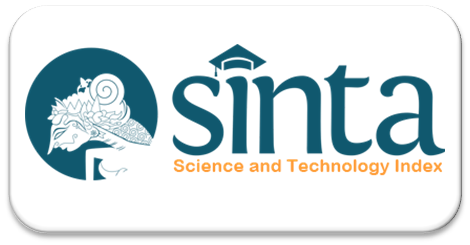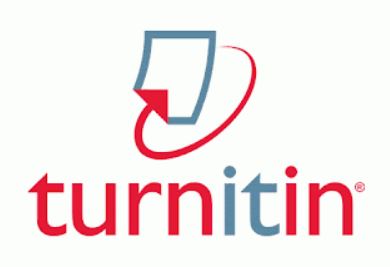Application Of Wound Dressing for Skin Integrity Disorders on A Ny S With Diabetic Ulcers in The a RS Iryou Houjin Aiwakai (Ikeda En) Okinawa Japanese Room
DOI:
https://doi.org/10.35960/vm.v17i3.1601Keywords:
diabetic ulcer, wound care, modern dressingAbstract
The prevalence of diabetes in Japan has recently increased, with 11 million adults suffering from diabetes by 2021. The high prevalence of diabetes is associated with a significant economic burden and can be attributed to lifestyle changes and increased longevity. This study aims to evaluate the impact of modern dressing on nursing care for skin integrity disorders at Iryou Houjin Aiwakai Hospital (Ikeda En), Okinawa, Japan. This study used a descriptive method with a case study approach to explore the nursing care process. Data were collected through direct observation, interviews with patients and medical personnel. The results of the study after nursing care for 3 days were that the damage to the skin layer improved, there was still redness and the wound area decreased. This study provides important insights for improving nursing practice and handling patients with diabetic ulcers, and can be a reference in developing more effective care strategies.
References
Amanda, A., Iksan, R. R., & Wahyuningsih, S. A. (2021). Application of Modern Dressing Wound Care in Elderly People with Diabetes Mellitus. Malahayati Nursing Journal,1 (1), 13-26. https://doi.org/10.33024/mnj.v1i1.5324
Aryzki, S., Alicia, M., & Rahmah, S. (2020). Overview of Antibiotic Use in Diabetic Ulcer Patients at the Internal Medicine Outpatient Installation of Rsud Ulin Banjarmasin July - December 2018 Period. Manuntung Scientific Journal,6 (2), 265-272. https://doi.org/10.51352/jim.v6i2.373
Br Ginting, D. (2024). Wound Care with Modern Dressing for Type 2 Diabetes Mellitus: A Literature Study. Health Sciences and Pharmacy Journal,7 (1), 63- 69. https://doi.org/10.32504/hspj.v7i1.1012
Cumatunaro, A., Marlia, S., & Dephinto, Y. (2020). Calorie Counseling on Blood
Sugar Levels of Type 2 Diabetes Mellitus Patients at Puskesmas Andalas Padang. Medika Saintika Health Journal,11 (2), 282-289. http://jurnal.syedzasaintika.ac.id/index.ph p/medika/article/view/858
Detty, A. U., Fitriyani, N., Prasetya, T., & Florentina, B. (2020). Characteristics of Diabetic Ulcers in Patients with Diabetes Mellitus. Scientific Journal of Sandi Husada Health,11 (1), 258-264. https://doi.org/10.35816/jiskh.v11i1.261
Dzaki, S. N., Julianto, E., & Puspasari, F. D. (2023). Diabetes Mellitus Wound Care with Modern Dressing Method. Multidisciplinary Scientific Journal,1 (6), 1000-1008. https://doi.org/10.5281/zenodo.8174493
Hidayat, S., R, N. M., Astuti, P., & Ponirah. (2021). Literature Review of the Effectiveness of Modern Dressing Hydrocolloid on Wound Healing in Diabetes Mellitus Patients Stikes Bani Saleh, West Java, Indonesia. Merdeka Nursing Journal,1 (wound care), 81-92. https://jurnal.poltekkespalembang.ac.id/i ndex.php/jkm/article/download/987/413/
Irwan, M., Indrawati, Maryati, Risna, Arafah, S. (2022). Effectiveness of Modern and Conventional Wound Care on the Healing Process of Diabetic Wounds. Mappadising Scientific Journal, 1(1), 1-9.
Rahayuningtyas, E. (2019). Muhammadiyah University of Magelang. Publication Manuscript, 4–35.
Santi Widiyanti R, D. N. A. (2020). The Application of Giving Cinnamon Extract to Reduce Blood Sugar Levels in Patients with Diabetes Mellitus in Gemah Semarang Village. Suparyanto and Rosad (2015, 5(3), 248–253.
Setiyaningrum, J., Khasanah, S., & Maryoto, M. (2023). Nursing Care for Diabetic Ulcer Patients at the Islamic Hospital in Purwokerto.
Downloads
Published
How to Cite
Issue
Section
License
Copyright (c) 2025 Fatimah, Siti Haniyah, Noor Yunida Triana

This work is licensed under a Creative Commons Attribution-ShareAlike 4.0 International License.
Submitted paper will be firstly reviewed by the editors to determine whether the paper meet the edition theme and submission guidelines. Papers which meet the theme and the guidelines will be assigned to selected reviewers for peer-reviews. Viva Medika: Jurnal Kesehatan, Kebidanan dan Keperawatan is a double blind peer-reviewed journal which involves reviewers based on their experties relevant to the topic of the paper. Final decision of paper acceptance is solely decided by the editors according to reviewers' comment.
Plagiarism and self-plagiarism are prohibited. Viva Medika: Jurnal Kesehatan, Kebidanan dan Keperawatan uses PlagiarismCheckerX and iThenticate to scan papers for detecting plagiarism. Thus, Appropriate citation and quotation should be used

.png)








